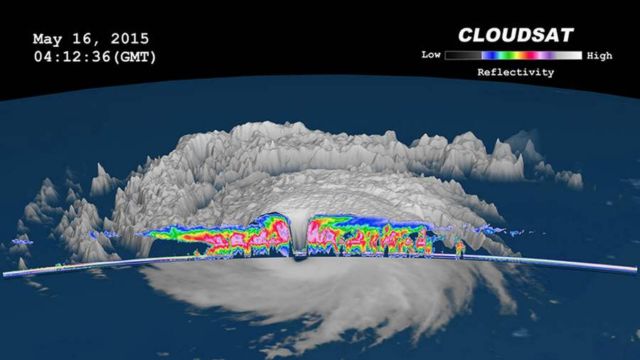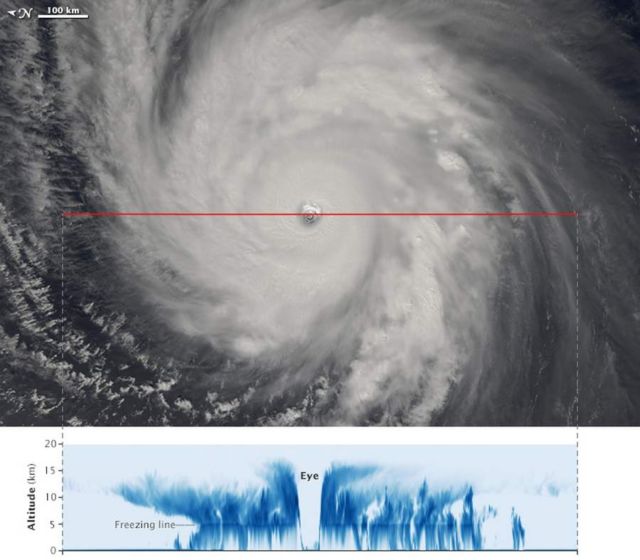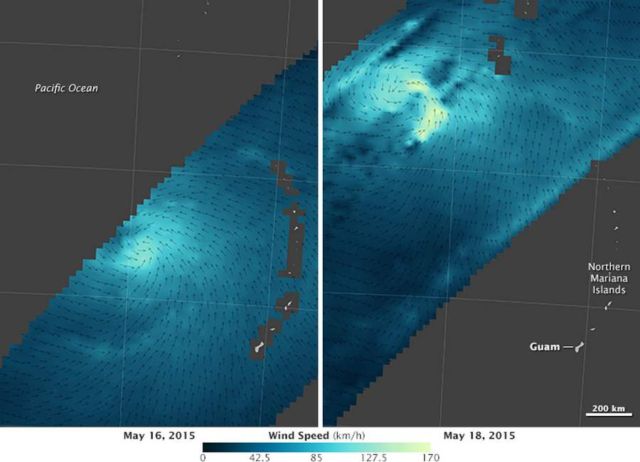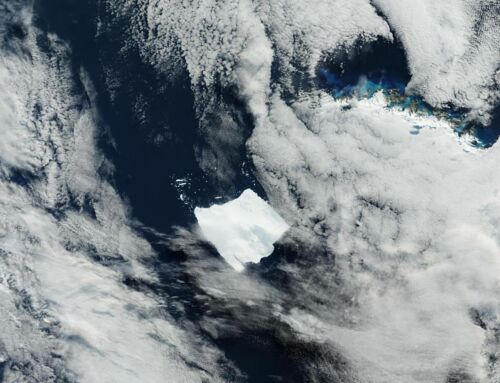A stunning eye overpass of Typhoon Dolphin in the West Pacific by NASA’s CloudSat satellite, on May 16.
NASA’s CloudSat satellite sends pulses of microwave energy through the clouds, and some of the energy in the pulses is reflected back to the spacecraft.
For remote sensing experts, getting a glimpse of the eye of a hurricane or typhoon with CloudSat is like a golfer hitting a hole in one. Consider: the cloud-penetrating radar on CloudSat has a field of view of just 1.4 square kilometers (0.5 square miles), but Earth’s total surface area is 1,320 million square kilometers (510 million square miles). Most tropical cyclones are well over 400 kilometers (250 miles) wide.
Yet a perfect eye overpass is exactly what researchers got on May 16, 2015. At 2:07 p.m. local time (04:07 Universal Time), the satellite passed over the eye of Typhoon Dolphin as the category 4 storm churned over the Pacific Ocean. The second image shows a cross-section—what the storm would look like if it had been sliced near the middle and viewed from the side.
In the CloudSat data, the darkest blues represent areas where clouds and raindrops reflected the strongest signal back to the satellite radar. These areas had the heaviest precipitation and the largest water droplets. The blue horizontal line across the data is the freezing line; ice particles formed above it, raindrops below it.
 MTSTAT and CloudSat imagery of Typhoon Dolphin. Credits: Natalie D. Tourville/ Colorado State University
MTSTAT and CloudSat imagery of Typhoon Dolphin. Credits: Natalie D. Tourville/ Colorado State UniversityCloudSat passed directly over the eye, allowing a view of the outward sloping eyewall, the intense convection and rainfall, and the storm’s cloud structure. Typhoon Dolphin’s clouds reached about 15 kilometers (9 miles) altitude at their highest point—fairly high for a tropical cyclone.
Meanwhile, a different NASA sensor was collecting another unique view of the storm. RapidScat, a scatterometer attached to the International Space Station, sends radar pulses toward the surface of the ocean. Observing how these pulses bounce off the water reveals sea surface “roughness,” which scientists can use to determine the surface wind speed and direction.
NASA Earth Observatory image (top) by Jesse Allen, using CloudSat data provided courtesy of the CloudSat team at Colorado State University. NASA Earth Observatory maps (bottom) by Joshua Stevens, using RapidScat data from the Jet Propulsion Laboratory. Caption by Adam Voiland.
source earthobservatory







Leave A Comment